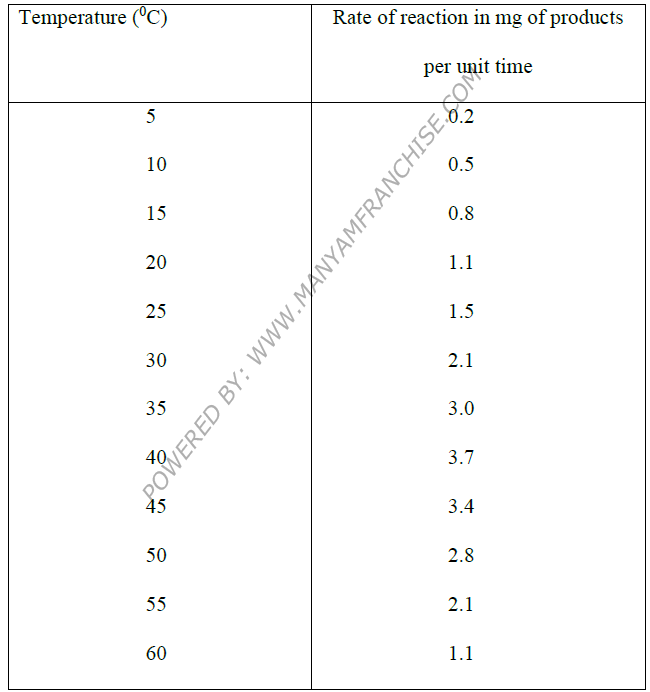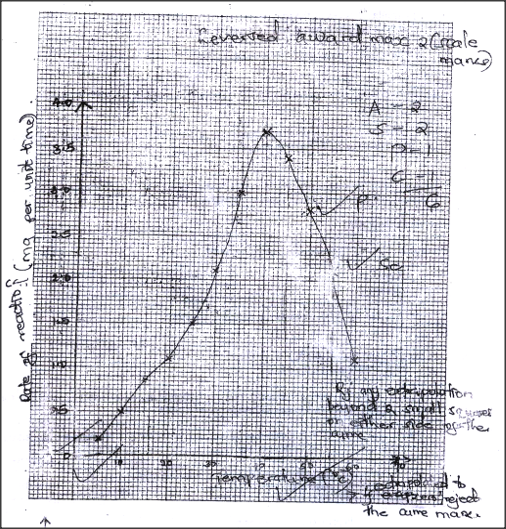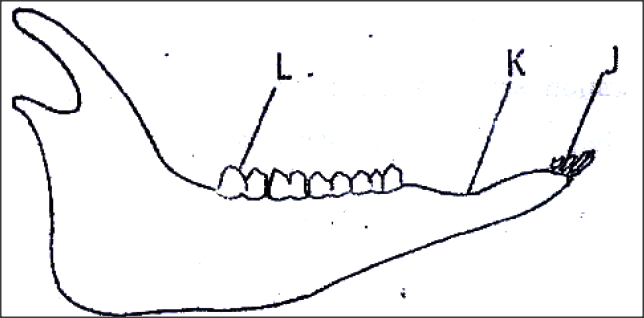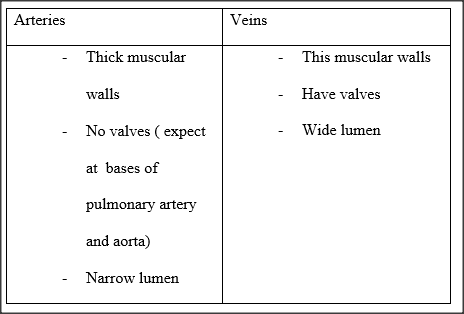|
K.C.S.E Biology Q & A - MODEL 2009PP2QN08
Describe the role of the liver in homeostasis in the human body
answers
0 Comments
K.C.S.E Biology Q & A - MODEL 2009PP2QN07
How are flowers adapted to wind and insect pollination?
answers
K.C.S.E Biology Q & A - MODEL 2009PP2QN06
An experiment was carried out to investigate the effect of temperature on the rate of reaction catalyzed by an enzyme. The results are shown in the table below
(a)On t he grid provided draw a graph of rate of reaction against temperature
(b) When was the rate of reaction 2.6 mg of product per unit time? (c) Account for the shape of the graph between (i) 5 C and 40 C (ii) 45 C and 60C (d) Other than temperature name two ways in which the rate of reaction between 5C and 40C could be increased (e) (i) Name one digestive enzymes in the human body which works best in acidic condition (ii) How is the acidic condition for the enzyme named in (e) (i) above attained? (f) The acidic conditions in (e) (ii) above is later neutralized (i) Where does the neutralization take place? (ii) Name the substance responsible for neutralization
answers
(b) 33C and 51.5 ( ± 0.5C)
32.5 - 33.5 and 51.0 – 52.0 (c)(i) As temperature is increased rate of reaction is increased/ more products are formed (per unit time) because enzymes become more active (ii) As temperatures increases rate of reaction decreases less products are formed (unit per time) because enzymes become denatured by high temperatures. (b) Increase in enzyme concentration and substance concentration Increasing number of enzyme (e) (i) Pepsin, remain/ chymosin (ii) Wall of stomach/ gastric gland/ oxyntic/ pariental/ cell produced Hydrochloric (f) (i) Duodenum (ii) Bile juice/ SANS any correct salt e.g. NaHCO3
K.C.S.E Biology Q & A - MODEL 2009PP2QN05
Give three functions of pectoral and pelvic fins in a fish
answers
- Steering
- Balance - Braking, changing direction - Prevent fish from pitching/ up & down movement K.C.S.E Biology Q & A - MODEL 2009PP2QN05
Name a support tissue in plants thickened with
(i) Cellulose (ii) Lignin
answers
(i) Collencyma
(ii) Xylem/ tracheid/ vessels/ schlerencyma
K.C.S.E Biology Q & A - MODEL 2009PP2QN05
what happens when a wilting young plants is well watered
answers
K.C.S.E Biology Q & A - MODEL 2009PP2QN04
(a) (i) Explain the changes that take place in the pupil and iris of a human eye when a person moves from a dark room to a room with bright light
(ii) What is the significance of the changes explained in (a) above (b) How does the human eye obtain nutrients? (c) Explain why images that form on the blind spot are not perceived
answers
K.C.S.E Biology Q & A - MODEL 2009PP2QN03
Name a substance that is responsible for acid rain
answers
K.C.S.E Biology Q & A - MODEL 2009PP2QN03
What are the effects of eutrophication
answers
( Proliferation of plants) block light from reaching plants underneath which will not photosynthesize the plants die and decompose leading to lack/ depletion of O2; animals also die/ suffocate.
K.C.S.E Biology Q & A - MODEL 2009PP2QN03
What is eutrophication?
answer
K.C.S.E Biology Q & A - MODEL 2009PP2QN03
Give an example of biological control
answers
K.C.S.E Biology Q & A - MODEL 2009PP2QN02
Name the substance that is responsible for hardening of teeth
answer
K.C.S.E Biology Q & A - MODEL 2009PP2QN02
The diagram below represents the lower jaw of a mammal
(a) Name the mode of nutrition of the mammal whose jaw is shown
(b) State one structural and one functional difference between the teeth labeled J and L Structural Functional (c) (i) name the toothless gap labeled K.
answers
(a) Herbivorous Rej Herbivore Acc Herbivory
(b) Tooth J is narrow/ sharp/ chisel like while tooth L is broad/ ridged J has one root while L has 2/3/4 roots Functional Tooth J is used for cutting while tooth L is used for grinding cutting for biting) (c) (i) Diastema (ii) For manipulation of blood by tongue K.C.S.E Biology Q & A - MODEL 2009PP2QN01
When the offspring of purple and white flowered pea plants were crossed, they produced purple and white flowered plants in the ratio of 3: 1 Using letter H to represent the gene for purple colour
(a) State the genotype of: (i) Parents (ii) F1 Generation (b) Work out the cross between plants in the F1 generation (c) Account for the colour the flowers in plants of the F1 generation
K.C.S.E Biology Q & A - MODEL 2009PP1QN29
Explain why the rate of transpiration is reduced when humidity is high
answers
K.C.S.E Biology Q & A - MODEL 2009PP1QN28
Name a disease that causes thickening and hardening of arteries
answer
K.C.S.E Biology Q & A - MODEL 2009PP1QN28
State three structural differences between arteries and veins in mammals
K.C.S.E Biology Q & A - MODEL 2009PP1QN27
State two ways in which anaerobic respiration is applied in industries
answers
K.C.S.E Biology Q & A - MODEL 2009PP1QN26
How are the mitochondria adapted to their functions?
answers
State two ways in which aerenchyma tissues in aquatic plants are adapted to their function23/6/2020
K.C.S.E Biology Q & A - MODEL 2009PP1QN25
State two ways in which aerenchyma tissues in aquatic plants are adapted to their function
answers
K.C.S.E Biology Q & A - MODEL 2009PP1QN24
Explain how the following factors determine the daily energy requirement in human:
(a) Age (b) Occupation (c) Sex
answers
(a) Young people are actively/ rapidly growing hence require more energy than older people
(b) Manual workers require more energy than secretary workers (c)Males are more muscular hence require more energy than females
K.C.S.E Biology Q & A - MODEL 2009PP1QN23
state the function of iron in the human body
answers
K.C.S.E Biology Q & A - MODEL 2009PP1QN22
Explain how the carnassials teeth of a dog are adapted to their function
answer
K.C.S.E Biology Q & A - MODEL 2009PP1QN21
Explain what happens in humans when concentration of glucose in the blood decreases below the normal level
answer
|
Archives
December 2024
Categories
All
TOPICSFORM 1
Form 2
Form 3
Form 4
|
Can't find what you are looking for? Don't worry, Use the Search Box Below.
|
Primary Resources
College Resources
|
Secondary Resources
|
Contact Us
Manyam Franchise
P.O Box 1189 - 40200 Kisii Tel: 0728 450 424 Tel: 0738 619 279 E-mail - sales@manyamfranchise.com |













 RSS Feed
RSS Feed

